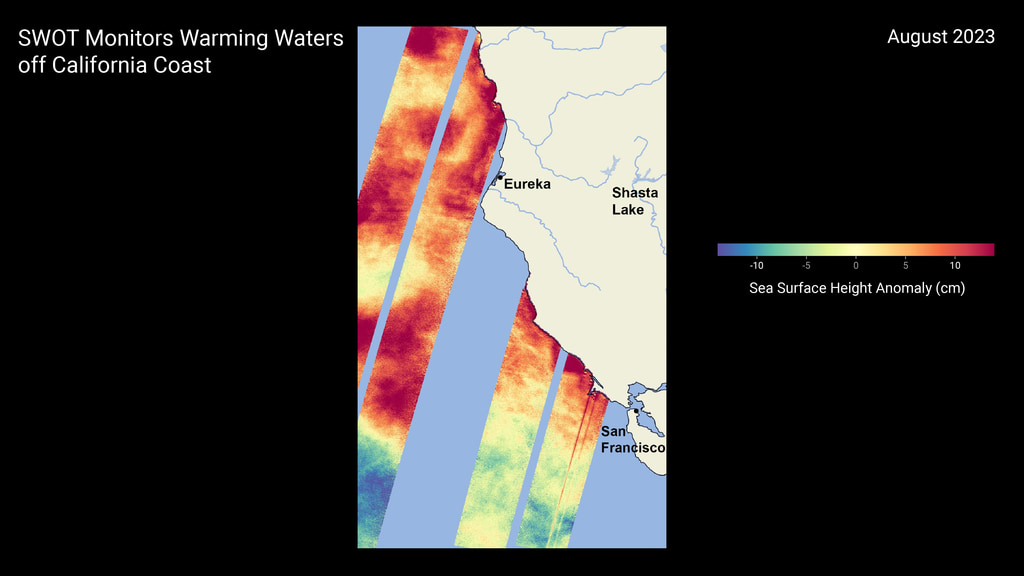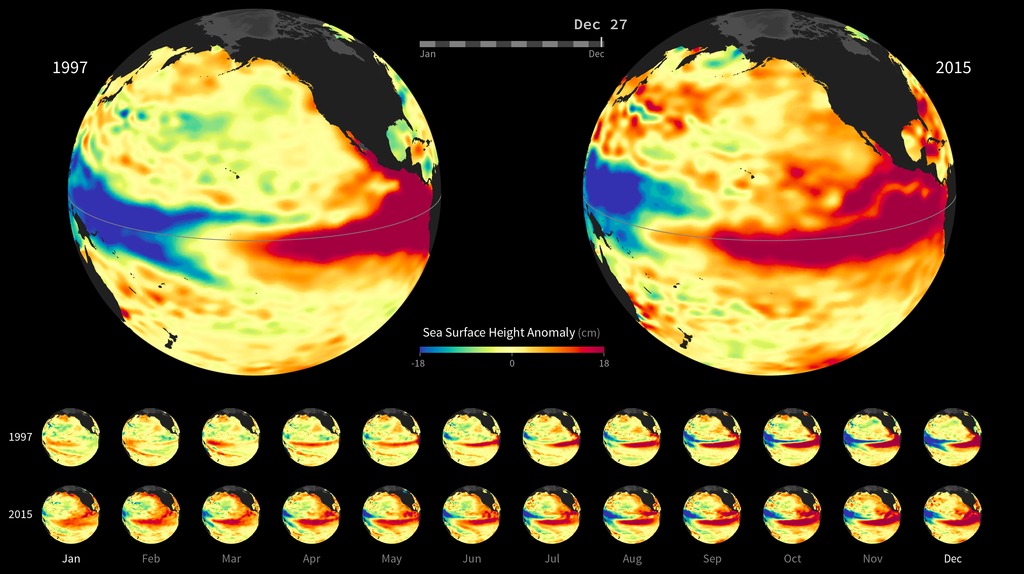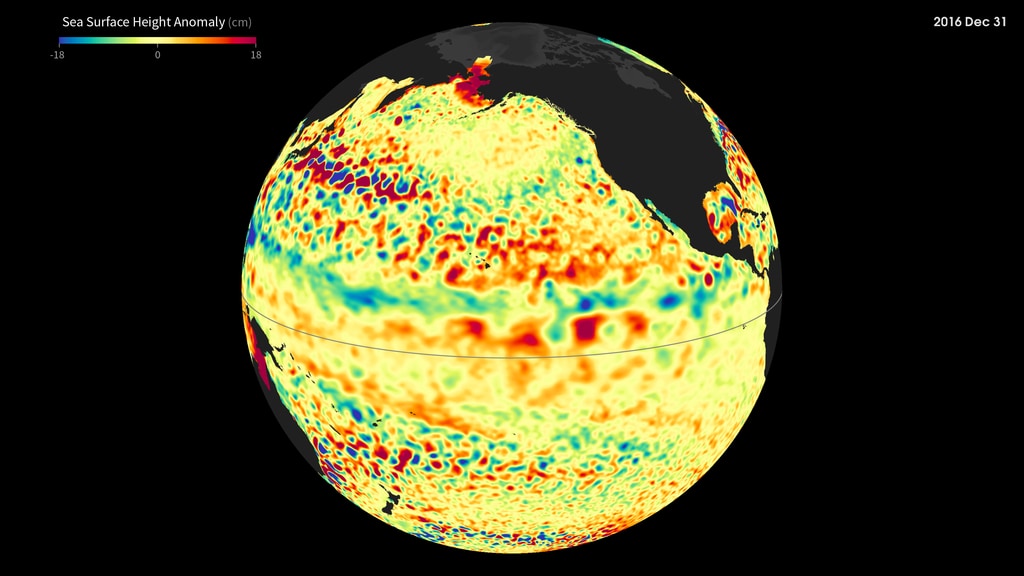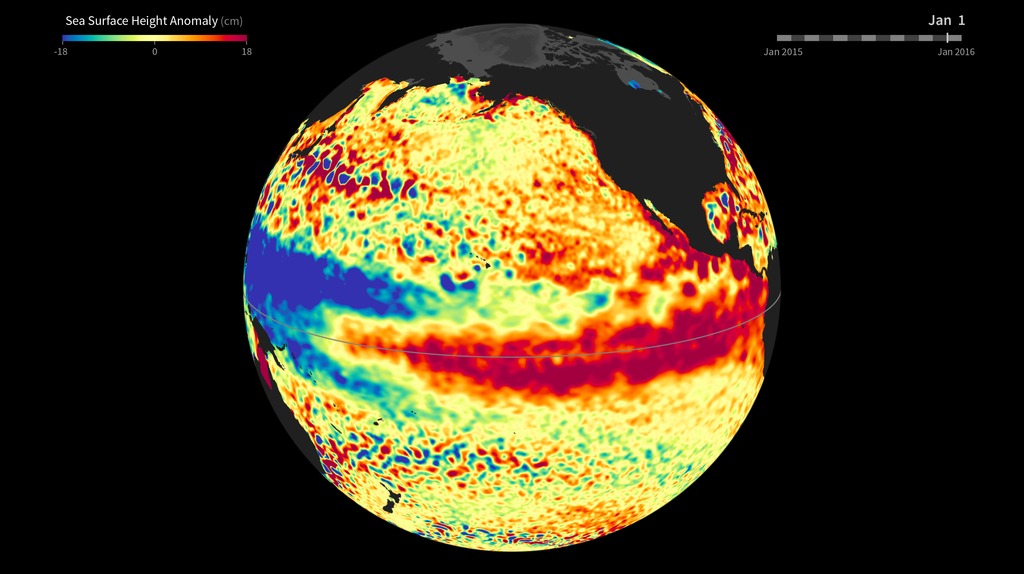Sea Surface Height Anomaly, 2022-2024
Animation of Sea Surface Height Anomaly in the Pacific starting January 1, 2022.
El Niño is characterized by unusually warm ocean temperatures in the eastern equatorial Pacific. The warmer water associated with El Niño displaces colder water in the upper layer of the ocean causing an increase in sea surface height because of thermal expansion.
This visualization, created using a sea surface height anomaly product available from the Copernicus Marine Service shows sea surface height anomalies (SSHA) from January 1, 2022 through February 7, 2024. The maps have been processed to highlight the interannual signal of SSH, i.e., the mean signal, seasonal signal, and the trend have been removed. Red and orange shades indicate high sea surface heights relative to the reference state, while blue and green shades indicate sea surface heights lower than the reference state. Neutral conditions appear yellow.
A statement issued by the NOAA Climate Prediction Center on February 8, 2024, states that "A transition from El Niño to ENSO-neutral is likely by April-June 2024 (79% chance), with increasing odds of La Niña developing in June-August 2024 (55% chance)."
For More Information
Credits
Please give credit for this item to:
NASA's Goddard Space Flight Center, Generated using E.U. Copernicus Marine Service Information.
-
Visualizer
Release date
This page was originally published on Sunday, July 9, 2023.
This page was last updated on Monday, July 15, 2024 at 12:25 AM EDT.



